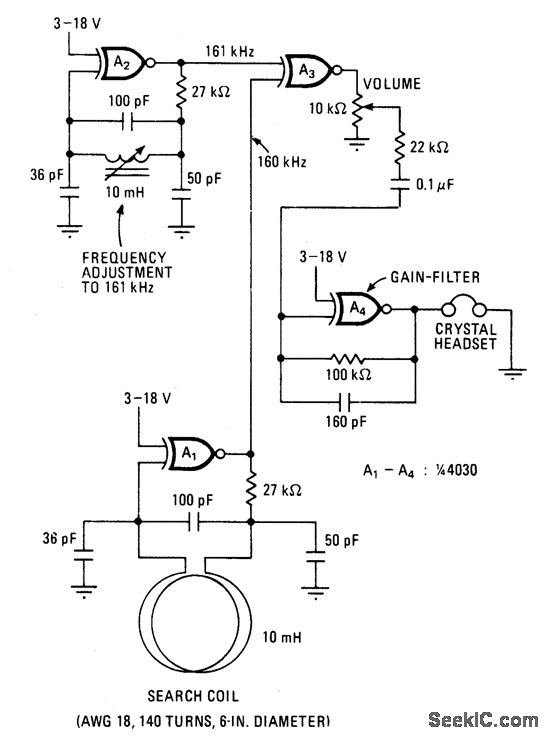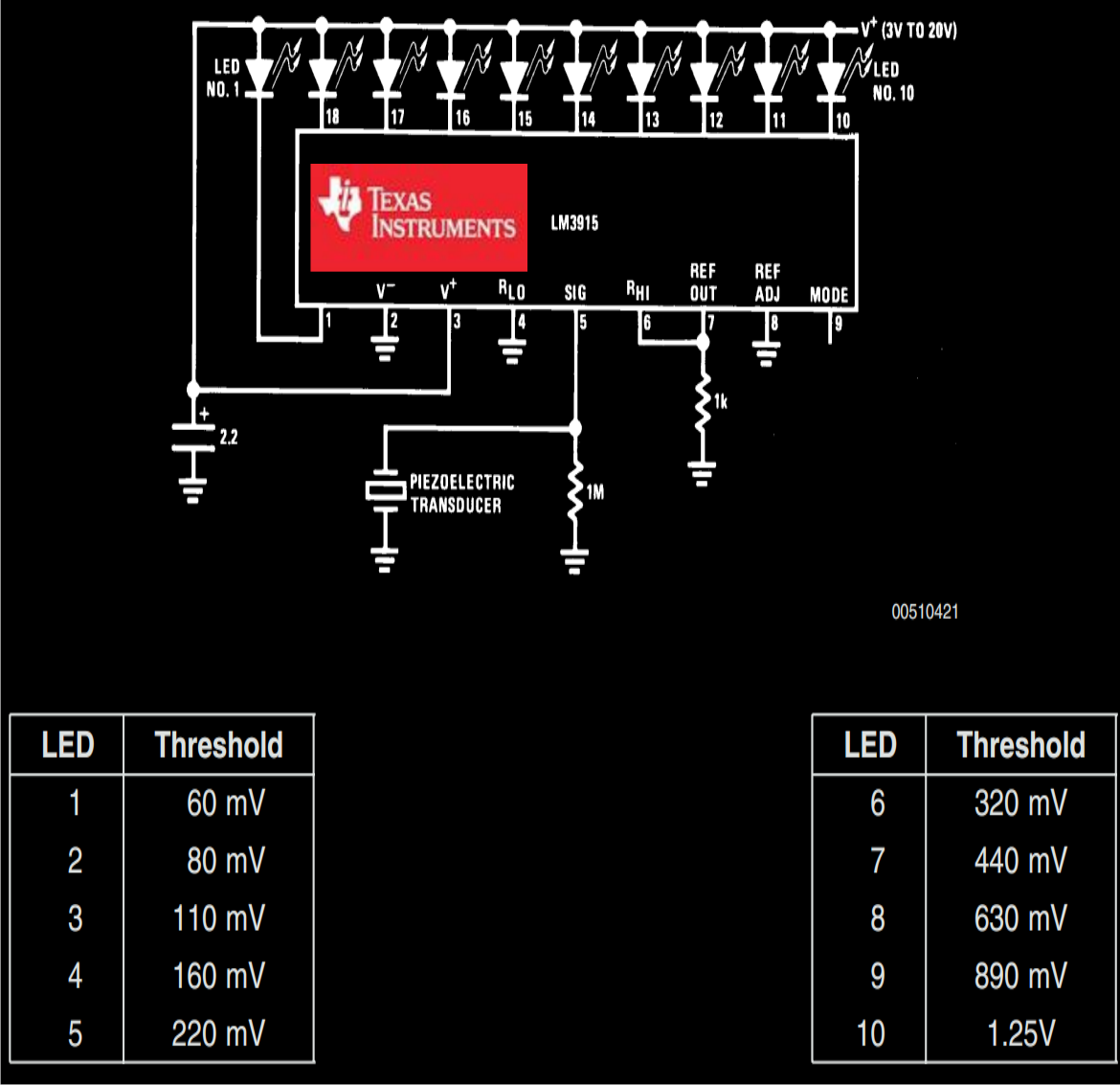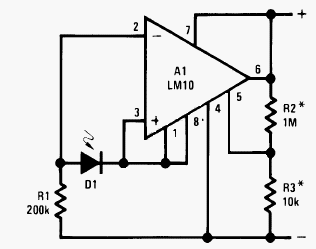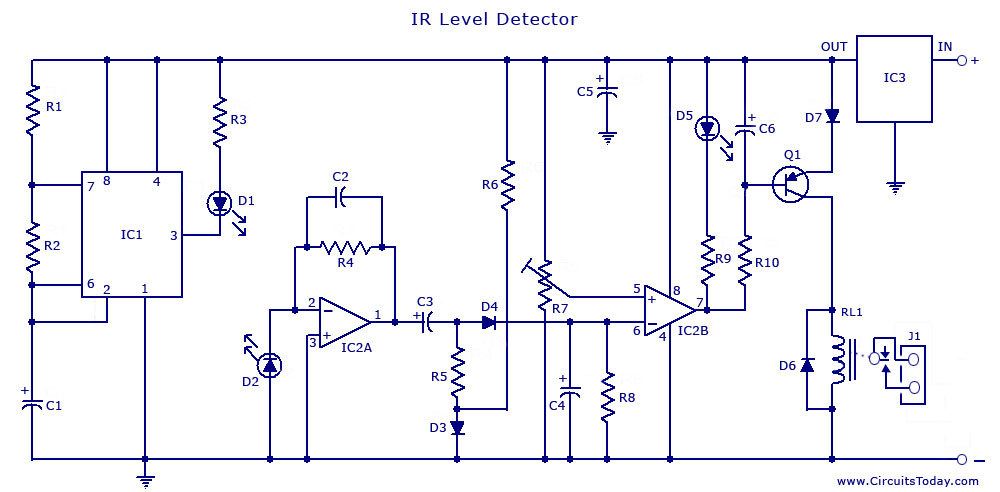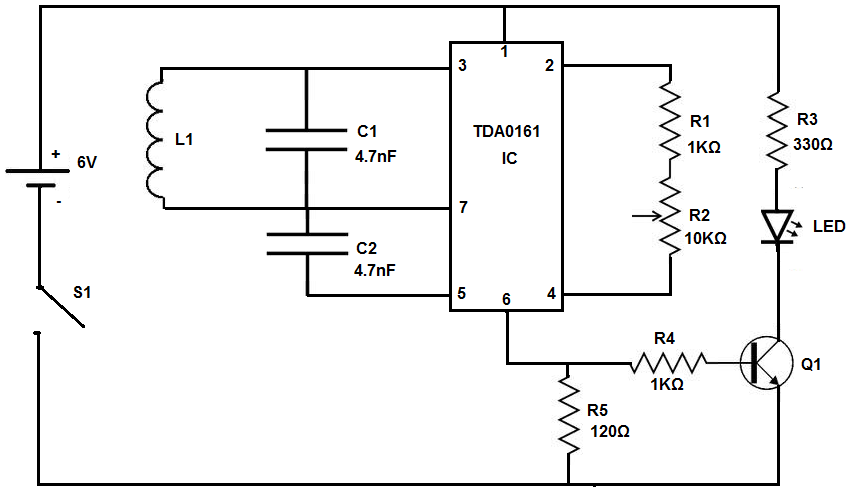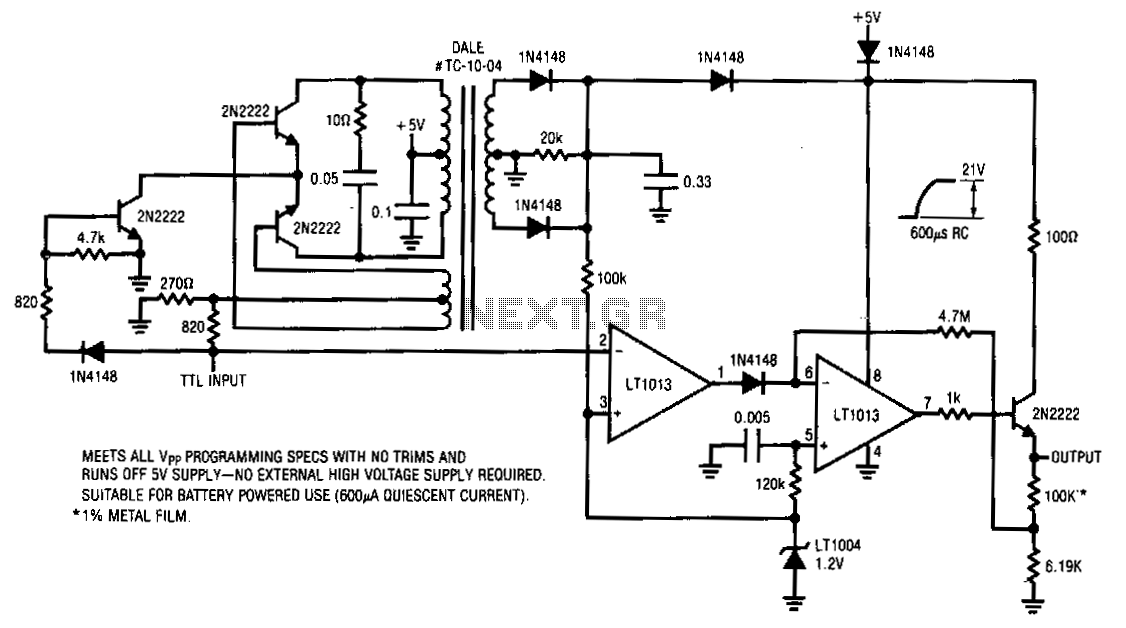
3V Water-Level Detector
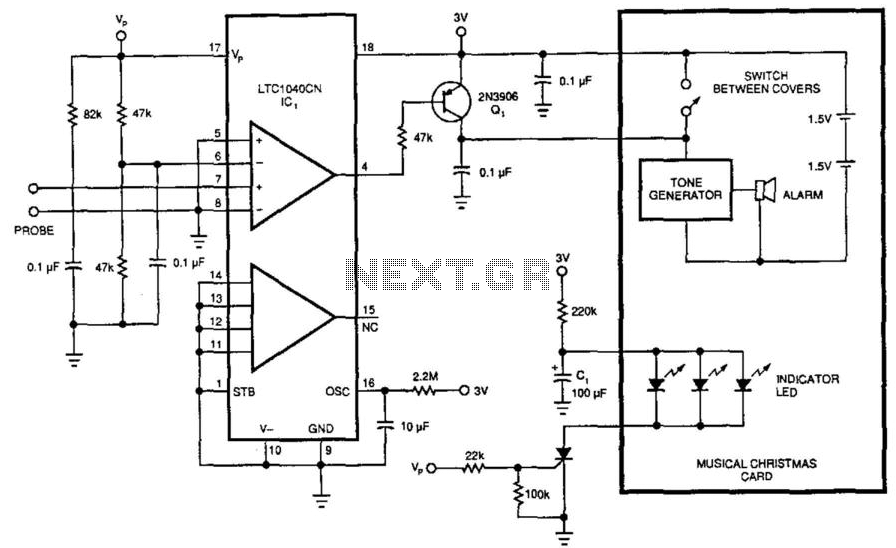
This circuit was originally designed to detect low water levels in a Christmas tree stand, but it can also be utilized as a water-level detector for pump controls and water sensors in garden and lawn applications. It employs a comparator and probe configuration using a Linear Technology LTC1040CN comparator to drive a 2N3906 transistor, which activates a tone generator. The circuit samples every 20 seconds to minimize current consumption, allowing a pair of dry cells to power the system for several months.
The circuit is fundamentally based on a water-level sensing mechanism that employs a comparator to evaluate the voltage levels from the probes immersed in water. The LTC1040CN comparator is chosen for its low power consumption and high precision, making it suitable for battery-operated applications. The probes, typically made of conductive materials, are positioned at predetermined levels within the water container. When the water level drops below a certain threshold, the resistance changes, leading to a voltage drop at the comparator's input.
The output from the LTC1040CN comparator is connected to the base of a 2N3906 transistor. The transistor acts as a switch, controlling the tone generator circuit. When the comparator detects a low water condition, it sends a signal to turn on the transistor, which in turn activates the tone generator. This generates an audible alert, notifying users of the low water condition.
To enhance the circuit's efficiency, the sampling rate is set to every 20 seconds. This interval is specifically chosen to strike a balance between timely detection of low water levels and conserving battery life. The use of dry cells as the power source ensures that the circuit can operate for an extended period, potentially lasting several months before requiring a battery replacement.
In summary, this versatile circuit design not only serves its original purpose of monitoring water levels in a Christmas tree stand but also finds applications in various domains where water-level detection is crucial. Its low power consumption, combined with reliable performance, makes it an excellent choice for both hobbyist projects and practical implementations in irrigation systems and pump control applications. Originally, this circuit was used to sense a low-water level in a Christmas tree stand, but the circuit can be use d as a water-level detector for pump controls, water sensors (for garden and lawn applications), etc. A comparator and probe setup with a Linear Technology LTC1040CN comparator drives a 2N3906, which switches a tone generator.
Sampling occurs every 20 seconds, which minimizes current drain. A pair of dry cells will power the circuit for several months. 🔗 External reference
The circuit is fundamentally based on a water-level sensing mechanism that employs a comparator to evaluate the voltage levels from the probes immersed in water. The LTC1040CN comparator is chosen for its low power consumption and high precision, making it suitable for battery-operated applications. The probes, typically made of conductive materials, are positioned at predetermined levels within the water container. When the water level drops below a certain threshold, the resistance changes, leading to a voltage drop at the comparator's input.
The output from the LTC1040CN comparator is connected to the base of a 2N3906 transistor. The transistor acts as a switch, controlling the tone generator circuit. When the comparator detects a low water condition, it sends a signal to turn on the transistor, which in turn activates the tone generator. This generates an audible alert, notifying users of the low water condition.
To enhance the circuit's efficiency, the sampling rate is set to every 20 seconds. This interval is specifically chosen to strike a balance between timely detection of low water levels and conserving battery life. The use of dry cells as the power source ensures that the circuit can operate for an extended period, potentially lasting several months before requiring a battery replacement.
In summary, this versatile circuit design not only serves its original purpose of monitoring water levels in a Christmas tree stand but also finds applications in various domains where water-level detection is crucial. Its low power consumption, combined with reliable performance, makes it an excellent choice for both hobbyist projects and practical implementations in irrigation systems and pump control applications. Originally, this circuit was used to sense a low-water level in a Christmas tree stand, but the circuit can be use d as a water-level detector for pump controls, water sensors (for garden and lawn applications), etc. A comparator and probe setup with a Linear Technology LTC1040CN comparator drives a 2N3906, which switches a tone generator.
Sampling occurs every 20 seconds, which minimizes current drain. A pair of dry cells will power the circuit for several months. 🔗 External reference
